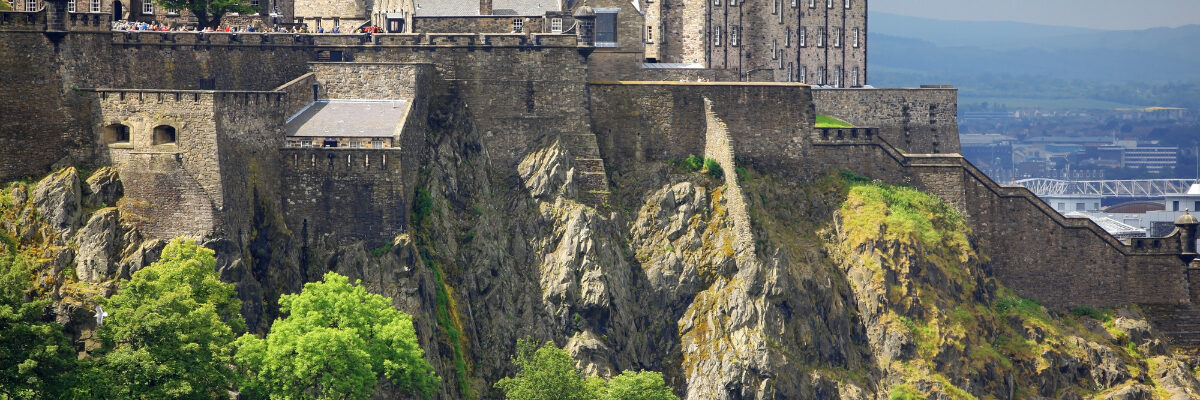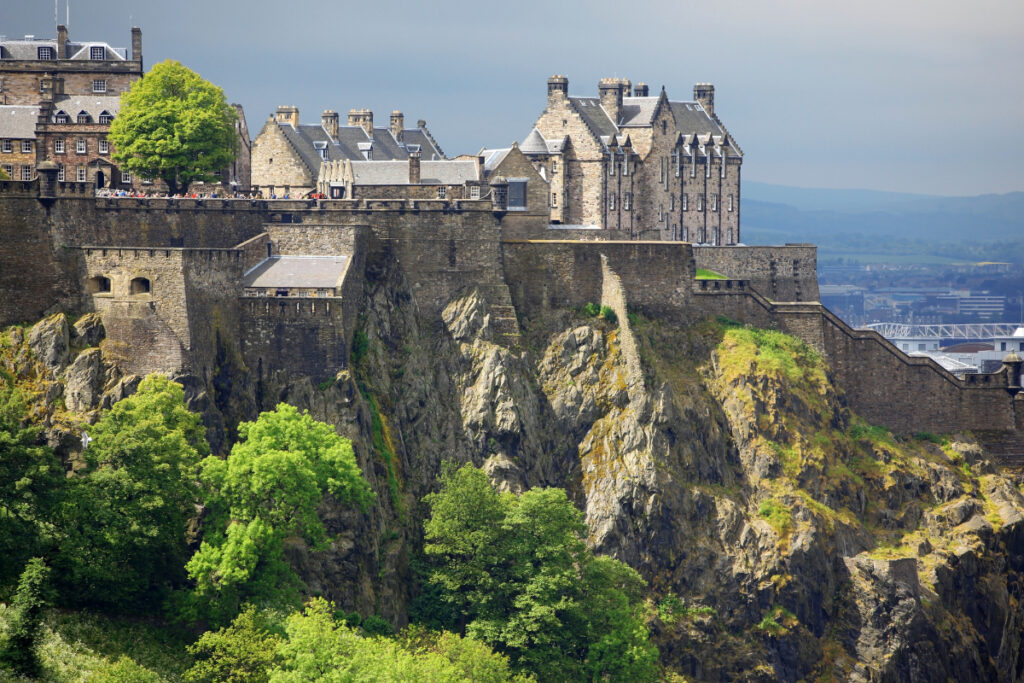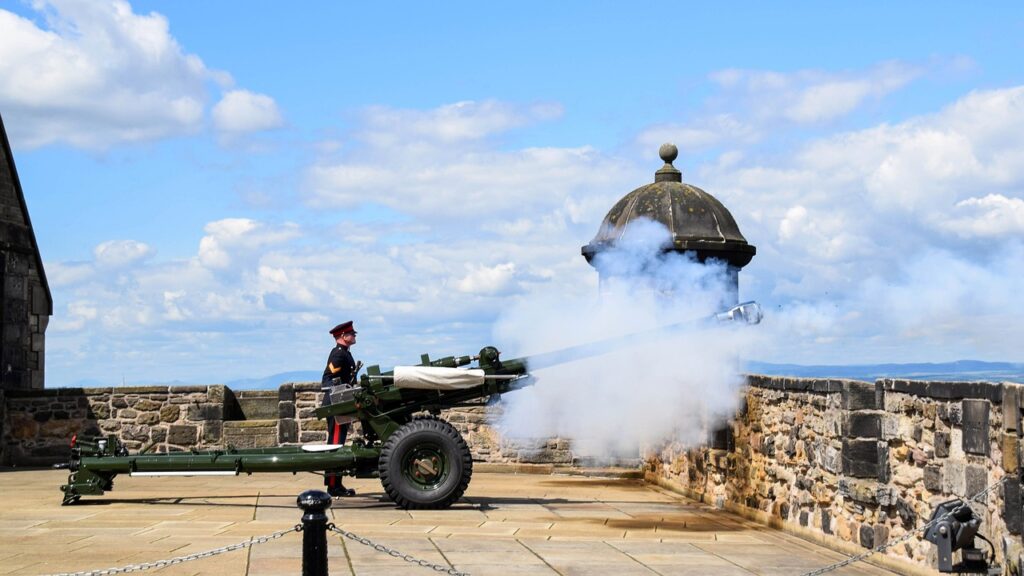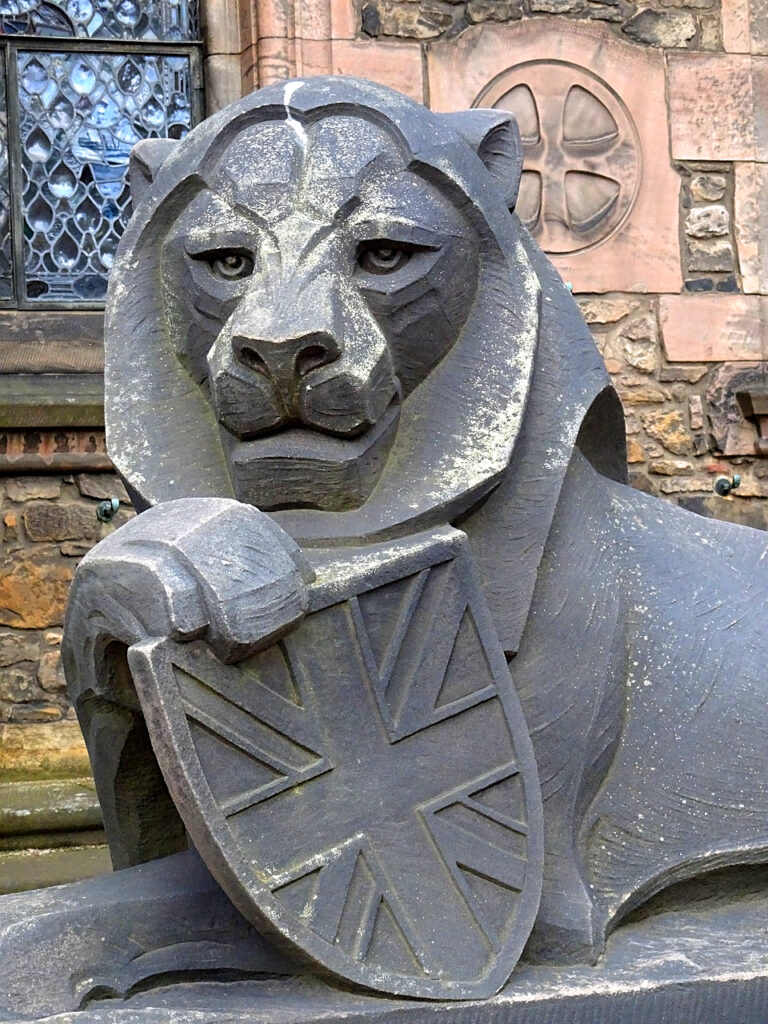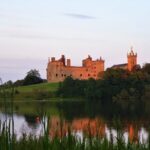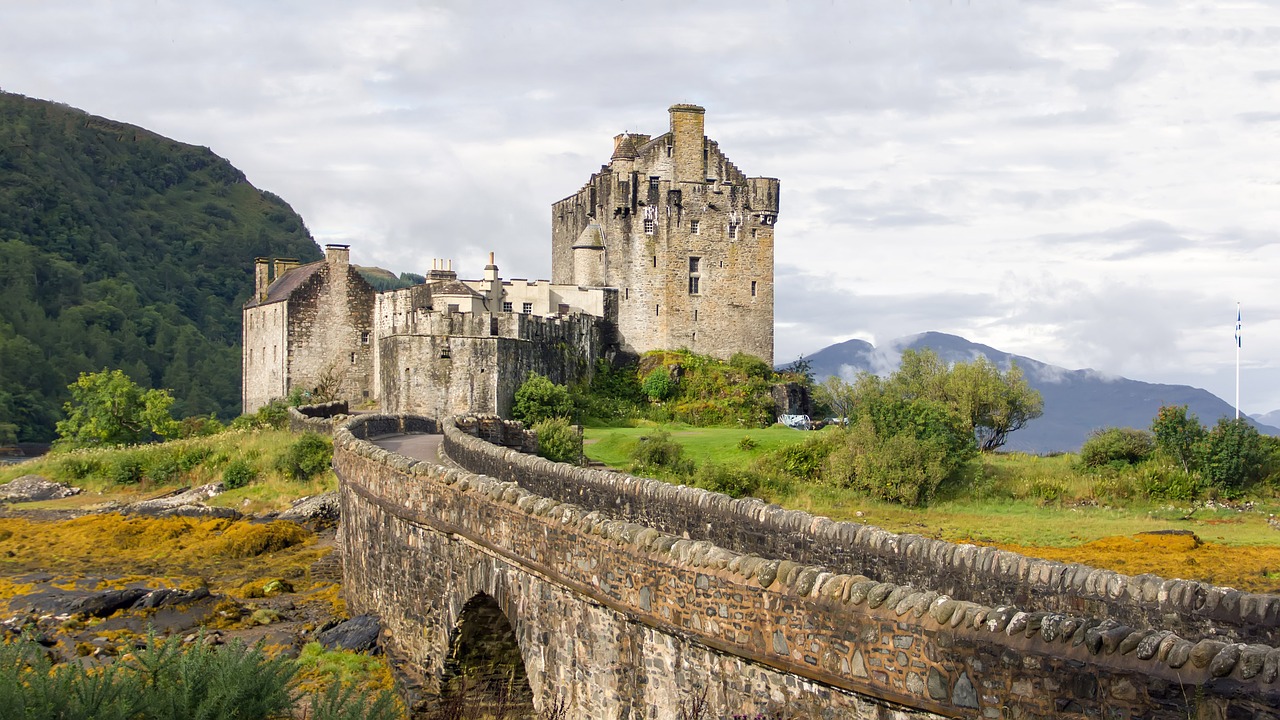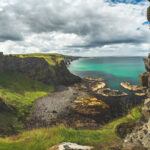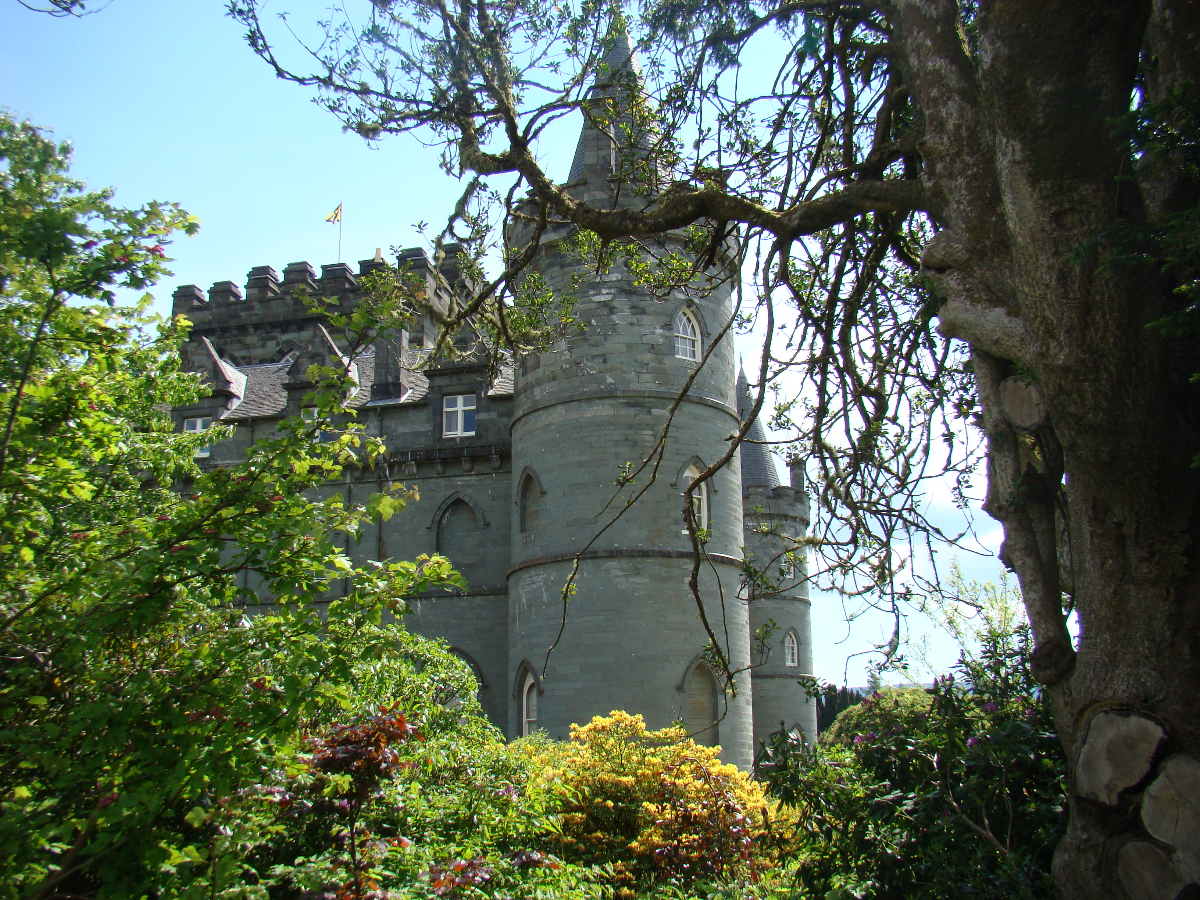From hilltop citadels to turreted palaces, Scotland is renowned for its iconic castles. Whether you’re interested in romantic ruins, imposing fortresses, or tiny, hidden gems, each and every castle– and there are some 3,000 of them — has an intriguing tale to tell.
Edinburgh Castle – thousands of years of history
Edinburgh Castle, the national symbol of Scotland, stands sentinel over the city from a high volcanic crag. Tied to 3,000 years of history, it was Scotland’s chief royal castle during the Middle Ages, and today, houses museums, a chapel, towers, and even a cemetery for officers’ pet dogs. There’s a lot to see here, and you’ll need the better part of a day to do it.
The “Honors of Scotland”
One thing you’ll want to see is the Crown Jewels, called the “Honors of Scotland”, the oldest royal regalia in the United Kingdom. They include a Crown, Scepter, and Sword of State, first used together in the coronation of Mary, Queen of Scots in 1543. Locked in a chest after the 1707 union of the Scots and English crowns, they were all but forgotten, until writer Sir Walter Scott asked the Prince Regent to search for them 111 years later.
You may also like: Check out Linlithgow Palace: A “fine but melancholy ruin”
Secret hiding place
During World War II, the Crown of Scotland was hidden in David’s Tower — in a royal toilet closet. Not a bad hiding place, as the tower had thick stone walls that could withstand a mortar bomb. The walls couldn’t keep out disease, however. After the Siege of 1689, skeletons of 15 able-bodied men were found here as well as that of a cow, the only one wounded by a musket ball.
You can explore the castle on your own or take a guided walking tour, a great way to learn about the castle’s past.
The One O’Clock Gun
Scots love tradition, and the firing of Mons Meg, the One O’Clock Gun, is a popular one. No matter how prepared you are, you’ll jump when the cannon blasts. Unless you’re a local, that is. Scots set their time by it. First fired in 1861 to provide an audible time signal for ships in the Port of Leith, sailors used it to solve the problem of longitude and latitude, helping to build the greatest empire in history.
Today, the One O’Clock Gun serves as a unique attraction for visitors to Edinburgh Castle. Each day, except on Sundays, Christmas Day, and Good Friday, the gun is fired at precisely 1:00 PM, and visitors can witness the spectacle from various points around the castle, including the Half Moon Battery and the Princes Street Gardens. And well, you don’t need to be in or even near the castle to hear it.
The Scottish National War Memorial
The statue of a heraldic lion from the royal arms with its Union Jack shield by Phyllis Bone guards the entrance to the Scottish National War Memorial, located within the grounds of Edinburgh Castle. The memorial commemorates Scottish service personnel and civilians, and those serving with Scottish Regiments who died in the two world wars and ensuing conflicts.
The central shrine is a light-filled space with a high dome, featuring a huge sculpture of St. Michael, carved in Scottish oak by the Clow brothers. St. Michael, the patron saint of soldiers, holds a sword and a shield. Above St Michael, carved in the stonework of the roof and setting him in the Heavens are symbolic representations of the Planets, designed like the windows beneath them, by Douglas Strachan.
Learn more about the history of the memorial.
The Edinburgh Military Tattoo
Edinburgh Castle also serves as the spiritual home of Scotland’s proud military tradition. The Edinburgh Military Tattoo, one of the world’s greatest spectacles, is a program of bagpipe bands, battle re-enactments, national dancing, and fireworks held every August, taking place on the castle’s esplanade, providing a stunning backdrop for the performances. The Tattoo attracts thousands of visitors from around the world every year.
Ironically, although built as a mighty fortress to keep people out, today the castle welcomes more than a million visitors a year. They come for thousands of years of history, culture, and tradition. But there’s an added bonus: Spectacular views of Edinburgh!
Traveling to Scotland? You may also like In the Heart of the Scottish Highlands: Exploring Inverewe Garden.
If you love Europe and want to visit castles, don’t miss our other castle posts, including:
- The Czech Republic’s beautiful Karlstejn Castle near Prague
- Inveraray Castle – Downton Abbey’s real Duneagle also in Inveraray, Scotland
- Scotland’s Linlithgow Palace near Edinburgh
- Scotland’s iconic Eilean Donan Castle
- Windswept Dunluce Castle in Northern Ireland

